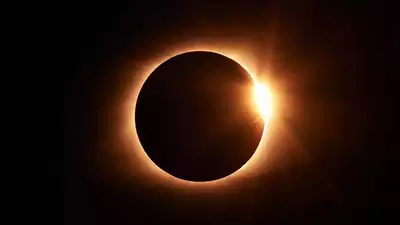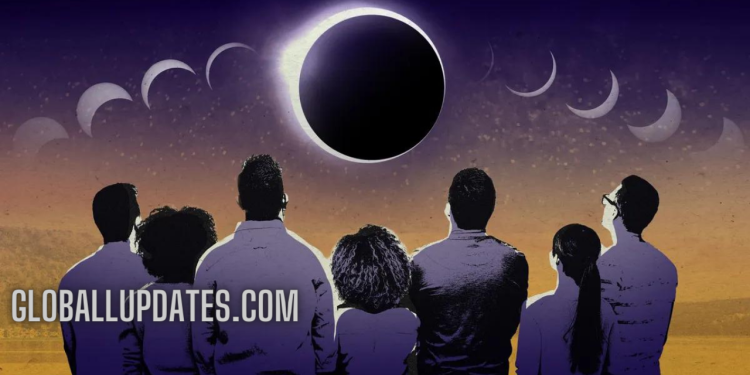The Celestial Event of a Lifetime
On April 8th, North America will be enthralled by a breathtaking natural phenomenon—a total solar eclipse that will sweep across the continent from Mexico to the easternmost tip of Canada. This rare event has sparked widespread excitement, with hundreds of events planned to celebrate the occasion. If you’re looking to join the celebration and witness this astronomical marvel, here’s everything you need to know.
Understanding Solar Eclipses
A solar eclipse occurs when the Moon positions itself between the Earth and the Sun, casting a shadow that blocks the Sun’s rays. There are two types of shadows: the penumbra, which results in a partial eclipse, and the umbra, which leads to the awe-inspiring total solar eclipse. During a total eclipse, the Moon completely covers the Sun, leaving only a dazzling ring of light visible in the sky.
The Rarity of Total Solar Eclipses
While solar eclipses happen a few times a year, the chance to witness a total solar eclipse is a much rarer occurrence. This is due to the Earth’s vast surface area, much of which is ocean, making it less likely for the total eclipse to be visible from populated areas. The last time a total solar eclipse spanned the continental U.S. was in 1918, and the next won’t occur until 2079—making the upcoming eclipse a once-in-a-lifetime opportunity for many.
When and Where to Watch
The eclipse’s timing will vary depending on your location, but the entire event will last about two hours. The path of totality, where the eclipse will be fully visible, stretches from Mazatlán, Mexico, through parts of the U.S., including Texas, Oklahoma, Missouri, Illinois, Ohio, and up to Newfoundland in Canada. Major cities along this path include Dallas, Indianapolis, Cleveland, and Buffalo. For a detailed breakdown of local times and locations, consult eclipse resources or local astronomical societies.
Best Viewing Locations
Astronomers have pinpointed the path of totality, ensuring that anyone within this 115-mile-wide corridor can experience the total solar eclipse. Iconic spots like Niagara Falls promise a spectacular view, whether you’re on the American or Canadian side. Other prime locations include cities like Dallas, Indianapolis, and Montreal, among others. Remember, weather conditions can impact visibility, so it’s wise to check the forecast and have a backup plan.
Weather Forecasts and Viewing Conditions
With the eclipse still a week away, weather forecasts are subject to change. Early predictions suggest that while some areas may face cloudy skies, places further north, like Carbondale, Illinois, and New England, are expected to enjoy clearer views. Montreal, in particular, is anticipated to have sunny skies on eclipse day.

Joining the Festivities
Across North America, a variety of gatherings are planned for eclipse enthusiasts. From stadium events in Dallas featuring guest speakers like Neil deGrasse Tyson to multi-day festivals in Cleveland, there’s no shortage of communal viewing experiences. Notably, Niagara Falls is preparing for its largest crowd ever, with officials marking prime viewing areas to accommodate over a million visitors.
Safe Viewing Practices
Viewing a solar eclipse requires proper eye protection to avoid permanent damage. Solar eclipse glasses with a special filter are recommended over standard sunglasses. These glasses should allow you to see nothing but bright lights faintly, ensuring they’re effective. The American Astronomical Society offers a list of reputable vendors for eclipse glasses.
Capturing the Eclipse
For those hoping to photograph the eclipse, consider using a sun filter for your camera and possibly a telephoto attachment to enhance photo quality. Turn off the flash, avoid zooming in, and try using burst mode during totality to capture the perfect moment. Remember, the most important part is to experience the eclipse firsthand, so don’t let photography distract you from enjoying this rare cosmic event.
An Experience to Remember
The upcoming total solar eclipse is more than just a spectacular view—it’s a moment to feel the awe-inspiring power of the cosmos. Whether you’re capturing it through a lens or simply basking in its fleeting beauty, April 8th promises to be a day that will leave a lasting impression on all who witness it. So, gather your friends and family, prepare your viewing glasses, and get ready to be part of a truly unforgettable experience.














































